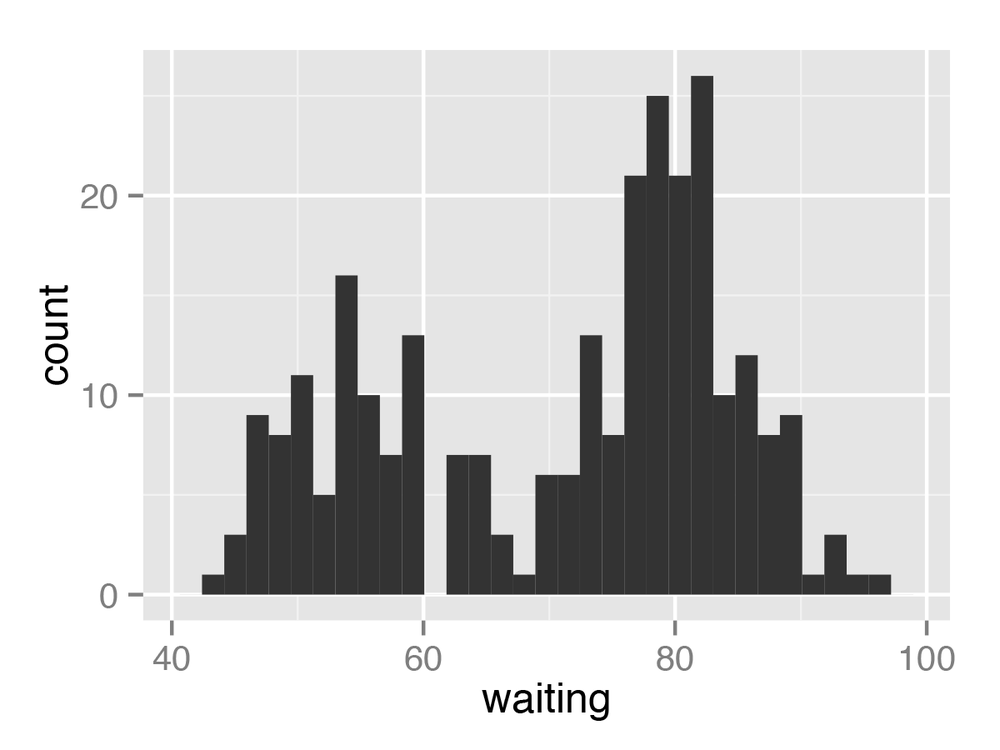Chapter 6. Summarized Data Distributions
This chapter explores how to visualize summarized distributions of data.
Making a Basic Histogram
Problem
You want to make a histogram.
Solution
Use geom_histogram() and
map a continuous variable to x (Figure 6-1):
ggplot(faithful,aes(x=waiting))+geom_histogram()

Discussion
All geom_histogram()
requires is one column from a data frame or a single vector of data. For
this example we’ll use the faithful
data set, which contains data about the Old Faithful geyser in two
columns: eruptions, which is the
length of each eruption, and waiting,
which is the length of time to the next eruption. We’ll only use the
waiting column in this
example:
faithful
eruptions waiting
3.600 79
1.800 54
3.333 74
...
If you just want to get a quick look at some data that isn’t in
a data frame, you can get the same result by passing in NULL for the data frame and giving ggplot() a vector of values.
This would have the same result as the previous code:
# Store the values in a simple vectorw<-faithful$waiting ggplot(NULL,aes(x=w))+geom_histogram()
By default, the data is grouped into 30 bins. This may be too
fine or too coarse for your data. You can change the size of the bins by
using binwidth, or you can divide the range of the data into a specific number of bins. The default colors—a dark fill without an outline—can make it difficult to ...
Get R Graphics Cookbook now with the O’Reilly learning platform.
O’Reilly members experience books, live events, courses curated by job role, and more from O’Reilly and nearly 200 top publishers.

